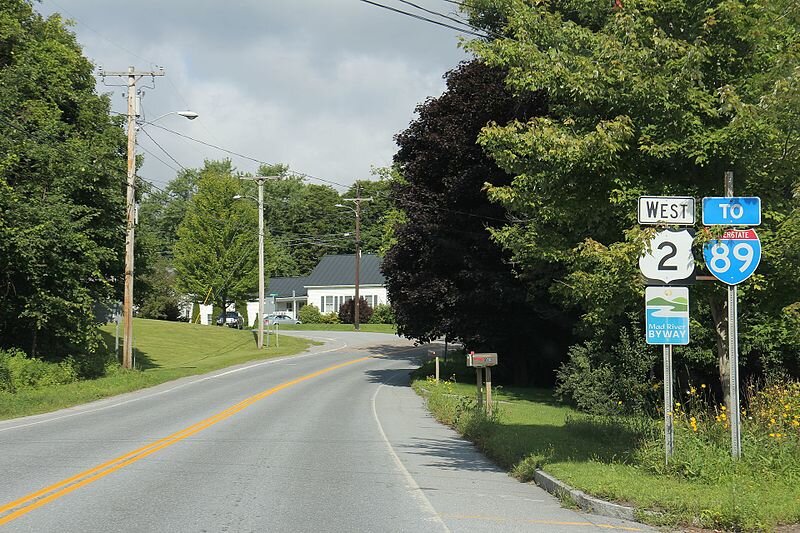What makes a Class 4 Road?
Definition of a Vermont Class 4 road:
A Vermont class 4 road (or Highway) is a road that is not maintained by the town or state and can be in any various state of disrepair 🤣. While these roads are not maintained, any legally registered vehicle and more importantly, any cyclist with a desire to traverse them may do so unless otherwise posted.
The Vermont Class 4 road system is truly an amazing resource we have here in New England. These roads offer access to old historic sites, beautiful waterfalls, and awe-inspiring vistas. Depending on the condition of the road, they can also offer a challenge to any gravel hearty cyclist, not to mention the 4x4 enthusiast. Many of these “roads” have been left unmaintained for so long that Mother Nature has reclaimed her grasp on them. Often when traveling these roads, one will encounter fallen trees, large boulders, or impassible water crossings. To travel these roads, one must be prepared with the proper equipment, proper knowledge, and a deep level of respect for the access we have to these ancient roads.
The topic of access is very important, and the message of respect must be passed to the new explorer. In order to keep these roads accessible, a strict code of ethics must be adhered to and passed on!
The code is as follows:
-Utilize the town maps which can be obtained through the Vermont Agency of Transportation website. Always confirm a road is open to vehicular and or cycling travel before utilizing it.
-Never travel on private land without the landowner’s permission
-Be a steward of the land, and pick up any trash you see.
-Get trained on the Tread Lightly practices, and use them.
-Support the local economy.
Classification of town highways
For the purposes of this section and receiving state aid, all town highways shall be categorized into one or another of the following classes:
Class 1: town highways: are those town highways that form the extension of a state highway route and which carry a state highway route number. The agency shall determine which highways are to be class 1 highways.
Example Class 1: Vermont’s famous Route 100
This route is known for its majestic fall foliage, small ski towns, and heavy vehicle traffic during peak tourist season!
Class 2: town highways: are those highways selected as the most important highways in each town. As far as practicable they shall be selected with the purposes of securing trunk lines of improved highways from town to town and to places which by their nature have more than normal amount of traffic.
Class 3 town highways: town highways are all traveled town highways other than class 1 or 2 highways. The selectmen, after a conference with a representative of the agency, shall determine which highways are class 3 town highways. (These are the “dirt roads” which Vermont is iconically known for)
(B) The minimum standards for class 3 highways are a highway negotiable under normal conditions all seasons of the year by a standard manufactured pleasure car, aka any standard car.
Class 4 (IV) town highways are all town highways that are not class 1, 2, or 3 town highways or unidentified corridors. The local select board shall determine which highways are Class 4 town (roads) highways.
image from 2021 @VermontOverland
Trails: shall not be considered highways and the town shall not be responsible for any maintenance including culverts and bridges. The above image of a Class 4 road could also or should really be considered a “trail”
Unidentified corridors: Just for your random knowledge…
(A) Unidentified corridors are town “highways” that:
(i) have been laid out as highways by the proper authority through the process provided by law at the time they were created or by dedication and acceptance; an
(ii) do not, as of July 1, 2010, appear on the town highway map prepared pursuant to section 305 of this title; and
(iii) are not otherwise clearly observable by physical evidence of their use as a highway or trail; and
(iv) are not legal trials.
(B) If the conditions in subdivisions (A)(i) and (A)(ii) of this subdivision (6) are met, the legislative body of a municipality or its appointee may, after providing 14 days' advance written notice to the owners of the land upon which the unidentified corridor is located, enter private property to determine whether clearly observable physical evidence exists.
(C) Unidentified corridors shall be open to use by the public, but only in the same manner as they were used during the 10 years prior to January 1, 2006 🤷🏼♀️ 🤷🏼♂️
(D) A municipality shall not be responsible for the maintenance of an unidentified corridor.




